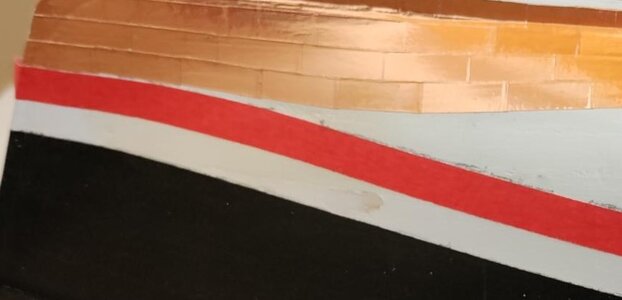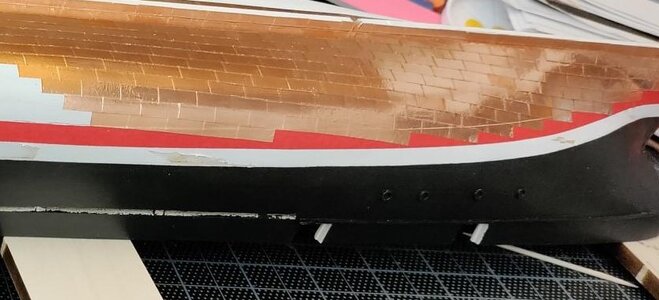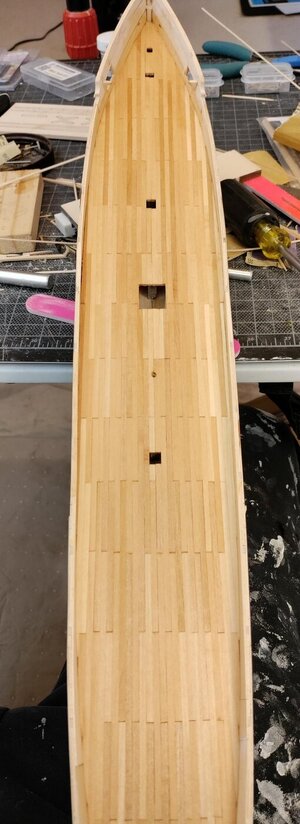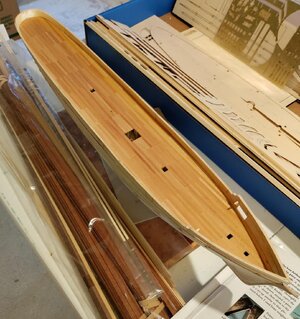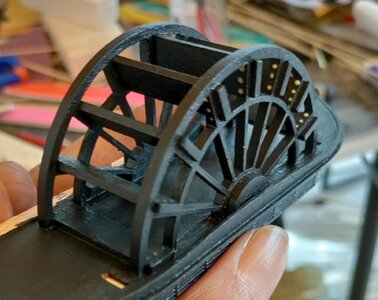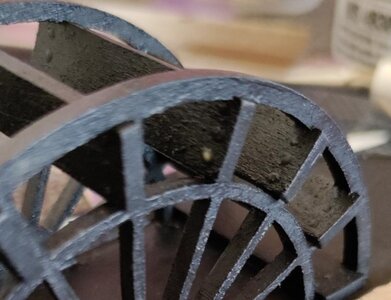Putty and paint.
I have mentioned a couple of times that the kit, although a wooden ship model, seems to have been designed with plastic modeling techniques in mind. Almost every build log I've seen shows modelers trying to, and mainly achieving, a perfectly smooth hull with the liberal use of putty. The problem, I think, is that the precut planking at 1/32" thickness is too flexible to maintain proper shape between the bulkheads. The remedy is to fill the spaces between the bulkheads with balsa so that the thin planking material cannot flex and the end result is smooth without needing putty. The alternative is to plan the build using 1/16" thick planks. This alternative would mean diminishing each bulkhead by 1/32" so that the end result gives one a hull in the dimensions it was designed to have. Better still - do both. With the latter alternative one would have the benefit of being able to show the wood from keel to the top of the upper bulwarks. The colors might be shown based on the species of wood. In any event, the hull could be completed to design and perfectly smoothed by sanding - no putty.
My problem with putty/filler is that it never, in my limited experience, has the same surface as the wood it lays on. Once painted it is pretty clear, again in my limited experience, that the hull is a combination of putty and filler and wood. I am happy to own that the issue is me. I just don't know how to do it properly. Fair enough. But, I'm not trying to give the impression that my model is plastic. It's a wooden ship model. I want the viewer to understand that they are looking at a model made of hundreds if not thousands of pieces of hand-shaped wood.
Paint. Instructions 21 - 24 inclusive, describe the method and manner of painting the hull. The author of the instructions used a spray primer from the can. He also used canned spray paint for the black topsides. Other builders seem to have taken things a step farther and, because they could, airbrushed the ship. Here's what happened with my build:
By the time I got to the point of painting I had allowed the instructions and other build logs to get in my head so firmly that I stopped work in order to research and source an airbrush and a compressor. The prices for an airbrush kit are not crazy although one can decide to spend a fair amount on top quality. I was then reminded, I don't know how or why, that I can just go for it with the paint I have and do it by hand with a brush. Many of you have written - "It's your model build it how you want to build it." So, that's what I did!
When I bought the kit, I also bought the Model Shipways paint package for the
Harriet Lane. I used MS primer and MS Hull/Spar Black for the upper bulwarks. Inboard the instructions call for white. I thought that white would be almost cartoonish in contrast with the black. I used MS Warm White instead and am happy with the contrast.
BTW - I have had less than satisfactory results with the MS primer. It does not bond well to the wood. I have found that it usually peels away in frighteningly large strips when I remove the waterline tape. All advice on better primers, better hull preparation, better technique is most welcome! Here's a shot of the primer peel.
